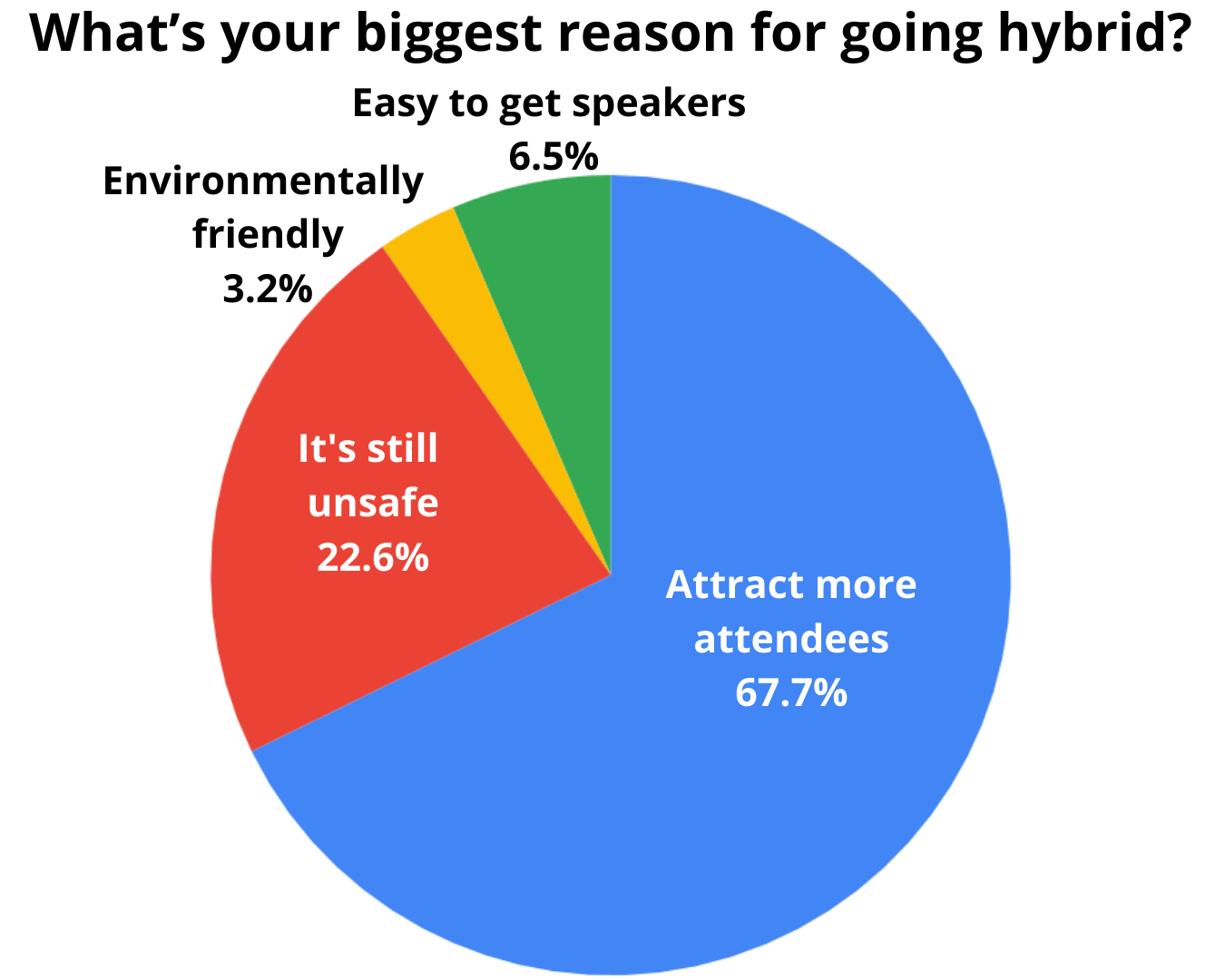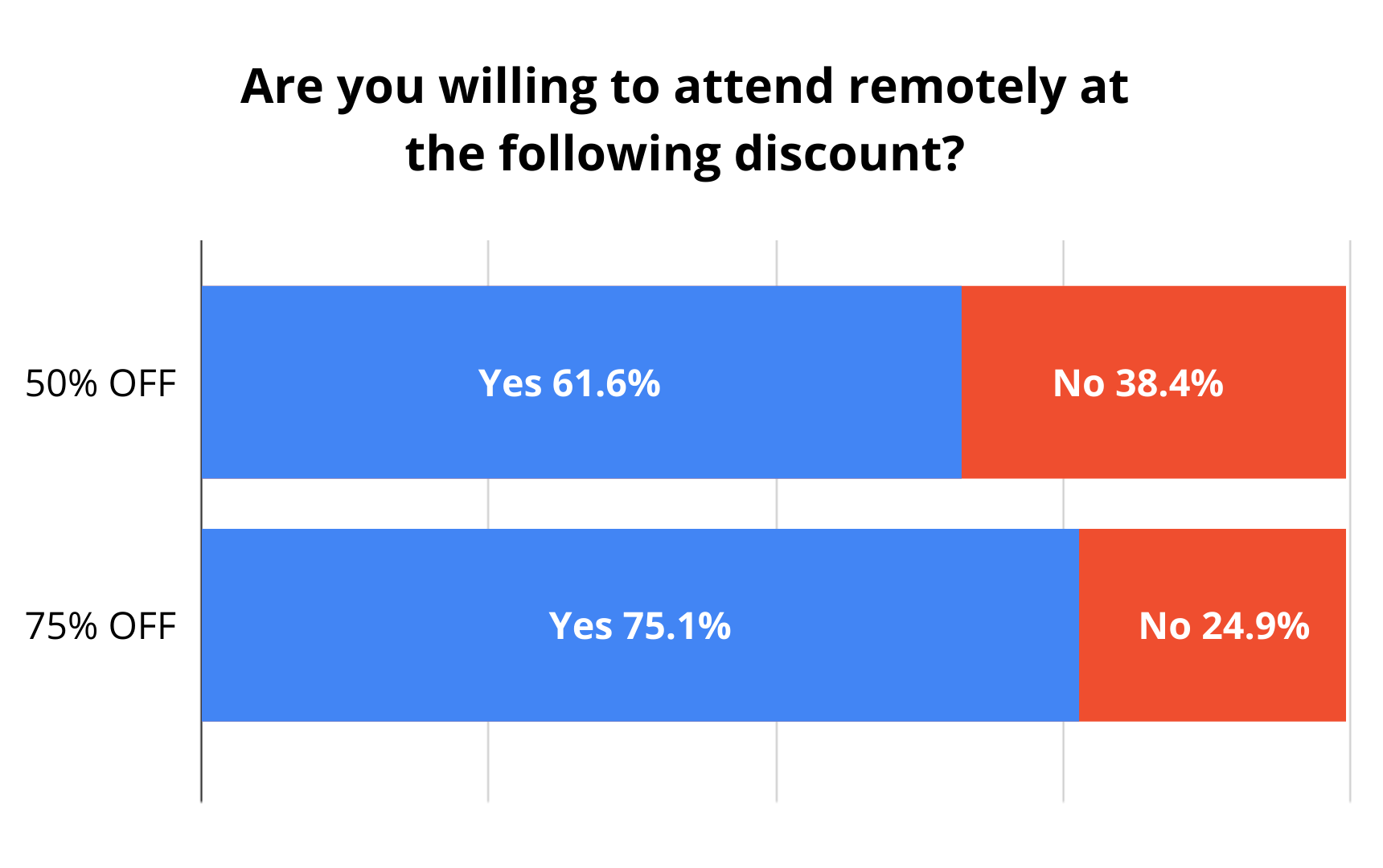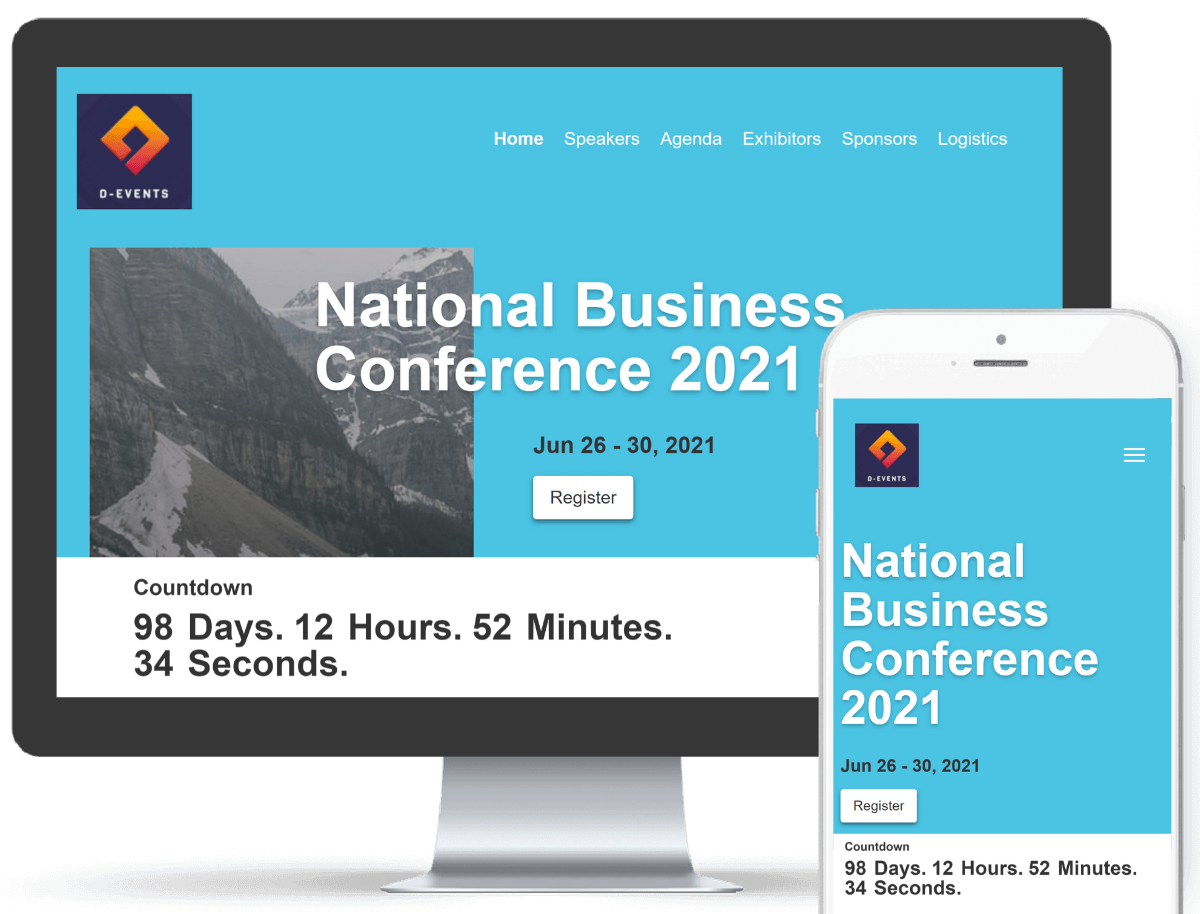As an organizer, hybrid events can give you access to the best of both worlds, coupling the accessibility of a virtual event with the interactivity of an in-person event. Not only that, if marketed correctly, it can also help you draw a bigger audience than ever as a wide net of both attendee types register. In a recent survey, we found that many organizers consider attracting more attendees to be the biggest benefit of putting on a hybrid event.

However, for many organizers, the prospect of putting one on can be intimidating. In addition to managing the logistics of the event itself, you want to market your event in a way that successfully reaches both audience types and inspires them to register.
While marketing a hybrid event is still going to draw on many of the same strategies as fully in-person or virtual events, here are some important tips to keep in mind while developing your hybrid event marketing strategy.
1. Set different expectations for different attendee types
While you want both sets of attendees to feel engaged and connected to the event, virtual and in-person audiences are inevitably going to have very different experiences. To properly set expectations and reach the right people for your event, you should consider the two groups’ different needs. In a previous blog, we already talked about the tools to help manage that during the event. It is the same when promoting the event – you need to have a specific audience targeted for each piece of marketing content.
For instance, attendees who would choose to go to person are drawn to opportunities for tactile, face-to-face interaction — they’ll want to know that they’ll be able to have real experiences with speakers, exhibitors, and products. Meanwhile, virtual attendees are more likely to prioritize safety and their budget. They also may be less committed to the event and will want to be sure that attending will be easy and affordable. To balance these two sides, it can be useful to dedicate a specific team member to ensuring things stay seamless across the virtual and in-person experiences.
Of course, you can’t know for sure how certain attendees will choose to attend the event when targeting your marketing content, so be sure to make the hybrid format clear even when emphasizing a particular audience. However, keep in mind that previous attendees are more likely to want to go in-person, whereas leads who have engaged less with your content in the past are more likely to opt for virtual.
2. Make your hybrid event marketing strategy virtual first
As exciting as it is to be back in person, don’t let the virtual part of your event go under-marketed. In addition to being a way to attract large numbers of attendees without worrying about physical space restrictions, it’s also a great way to attract first-time attendees and encourage them to attend in person in the future.
However, you want to make sure they feel fully engaged and appreciated as attendees. So when developing your hybrid event marketing plan, be sure to target both audiences, but try to consider what opportunities will appeal to your virtual audience first so it doesn’t go neglected.
3. Remember the hybrid format is part of the attraction
Hybrid events are exciting! For attendees, it gives them a sense of flexibility and choice when they register and can be especially attractive to attendees who haven’t totally made up their minds about whether they’re comfortable attending in person. So be sure to advertise the fact that your event will be hybrid!
Make sure your content highlights the unique aspects of both the in-person and virtual experiences, and keep registration flexible so attendees can still be confident signing up even if they think they might change their mind about which way they’re attending.
4. Know your goals from day one
It may seem obvious, but before you do anything else, have a clear sense of what you want to achieve. This is more than just how many attendees you’re hoping to attract; for instance, what make-up of in-person to remote attendees are you expecting? What are your goals for registration and ROI for each stage of the event? What will you do to monetize your hybrid event?
Develop these overarching goals for your hybrid event marketing strategy early on and continue to hold brainstorming sessions for each stage of the campaign to see how you can achieve these goals as well as adjust them as you learn more.
5. Empower speakers, sponsors, exhibitors, and even attendees to promote the event
Word of mouth is one of the best ways to advertise an event, and your speakers and vendors likely have built-in audiences who will be interested in checking them out! Encouraging them to spread the word not only helps you promote your event, but expands their reach and makes it easier for them to reach attendees who will be interested in them. To make it especially easy, provide them with pre-made images and posts for convenient social sharing.
You can further encourage event promotion and even empower attendees to spread the word themselves with tools like Whova’s Social Media Center, which prompts attendees, speakers, and vendors alike to spread the buzz with pre-made content.

Prompt attendees, exhibitors, speakers, and sponsors to share the event with different posts and automatically generated images
6. Create exclusive sessions to market unique, exciting benefits for both audiences
Virtual and in-person attendees are going to have unique experiences at the event, so make sure they get unique benefits as well! For instance, give virtual attendees access to behind-the-scenes footage and exclusive interviews. You can also schedule separate networking sessions for the two groups, using digital networking tools to create exclusive online sessions for virtual audiences and planning on-site opportunities for attendees at the venue.
Just be sure that your event platform allows you to track different sessions to different ticket types so there isn’t any confusion! You should be able to do this even more easily if your event platform can separate between remote and in-person attendees. Also, make sure to advertise these opportunities when creating targeted marketing content for both attendee types.
7. Tier tickets to attract different types of attendees
Creating separate experiences for each ticket type can also allow you to leverage some of the benefits of tiered ticketing. For instance, you can sell remote tickets at a lower price to create two different tiered experiences. According to our past survey, many attendees would be interested in attending an event remotely for a reduced ticket price of 50-75% off.

In addition to keeping some opportunities exclusive to in-person or remote attendees, you can also tier tickets further within these categories. For instance, reserve some of the best virtual exclusive content for the highest tier tickets, or give high-tier in-person attendees access to the video libraries as well. You can also give both groups access to new networking sessions to create a VIP virtual experience as well as an in-person one.
8. Create a webpage specialized to both experiences
Every attendee is going to see your webpage when they go to look for more information about your event or to register, so be sure you have a professional event website that matches your event’s brand and makes it clear that they can register as an in-person or virtual attendee.
If you’re not experienced with web design or just want to handle this setup quickly and easily, some event platforms like Whova can provide you with templates that will allow you to create an attractive, fully branded website so you can effectively target both attendee types and encourage them to register.

Encourage attendees to register with fully branded event websites
9. Highlight hybrid elements through social media and email marketing
Like with many other events, social media and email marketing can be especially valuable ways to promote a hybrid event. Social media in particular can help you reach remote attendees, while email campaigns enable more targeted approaches by deciding which prospects will get which materials.
Hold account takeovers with your speakers, sponsors, and exhibitors, and don’t be afraid to use influencer marketing in your industry to promote the event. For emails, keep your campaign dedicated and specific, encouraging attendees to register for the event and not anything else.
10. Use an event platform with flexible marketing tools
With the right tools, following these strategies should be simple. So when choosing an event platform, look for one that will take an active role in helping you promote your event. For instance, Whova’s all-in-one event platform can fully support your hybrid event in addition to helping you market it, from building your event website and empowering participants to promote the event with pre-made graphics, to social media and email content scheduling.
Leverage the benefits of having both an in-person and remote audience
Hybrid events are a great way to extend your reach across two types of attendees, and you don’t want to miss out on some of the unique benefits that can come with the format. With these tips, you should be able to create an effective hybrid event marketing strategy that reaches attendees of all types! If you’re interested in any of the resources Whova can provide to help you market your event, just sign up for a free product demo.
Related Case Studies
